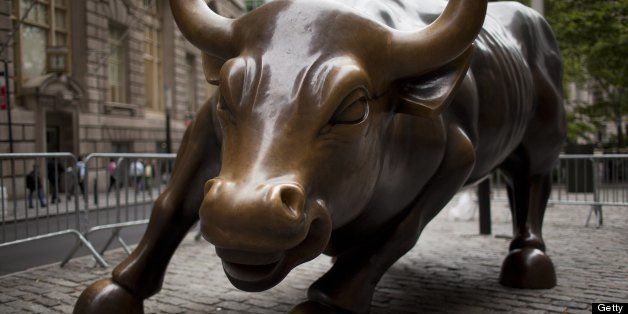
By Douwe Miedema
WASHINGTON, June 21 (Reuters) - Two top U.S. bank regulators are pushing to double capital requirements for the country's largest banks, Bloomberg reported on Friday, as the debate about banks that are "too big to fail" heats up.
The Federal Reserve and the Federal Deposit Insurance Corp (FDIC) aim to raise the amount of shareholder capital banks must hold to 6 percent of their total assets, twice the internationally agreed-upon level, Bloomberg said.
Critics of large banks say this so-called leverage ratio is the best way to force banks to borrow less money to fund their business, because it does not allow them to rely on their own mathematical models to measure risk.
A source familiar with the talks told Reuters that discussions about the leverage ratio among the three U.S. bank regulators were ongoing, and that no number had been agreed on.
The Fed and the FDIC declined to comment. The Office of the Comptroller of the Currency (OCC), the third regulator negotiating the U.S. version of Basel III, had no immediate comment.
Both the FDIC and the Fed have openly expressed doubt about the present leverage ratio in the past.
Thomas Hoenig, the FDIC's second-in-command, told Reuters in an interview last week that Deutsche Bank was "horribly undercapitalized" because its leverage ratio stood at 1.63 percent at the end of last year.
And Daniel Tarullo, the Fed's main policymaker for financial regulation, has said that the 3 percent leverage ratio agreed to internationally in the Basel III capital accord "may have been set too low."
Bloomberg, quoting four people with knowledge of the talks, said that the United States could come out with final rules to implement the Basel III agreement in the coming weeks. In the proposed rule, the ratio stands at 3 percent.
But the higher leverage ratio would be left out of the rules, Bloomberg said, to be proposed at a later stage so that the banking industry could submit comments.
Two U.S. senators, Republican David Vitter of Louisiana and Democrat Sherrod Brown of Ohio, in April introduced a bill that sets a 15 percent leverage ratio for the largest banks, a plan that would force them to raise so much capital that they would in all likelihood need to break up their businesses.
Such political proposals, while unlikely to make it through Congress, put pressure on the bank regulators. The FDIC's Hoenig is a proponent of a 10 percent leverage ratio.

